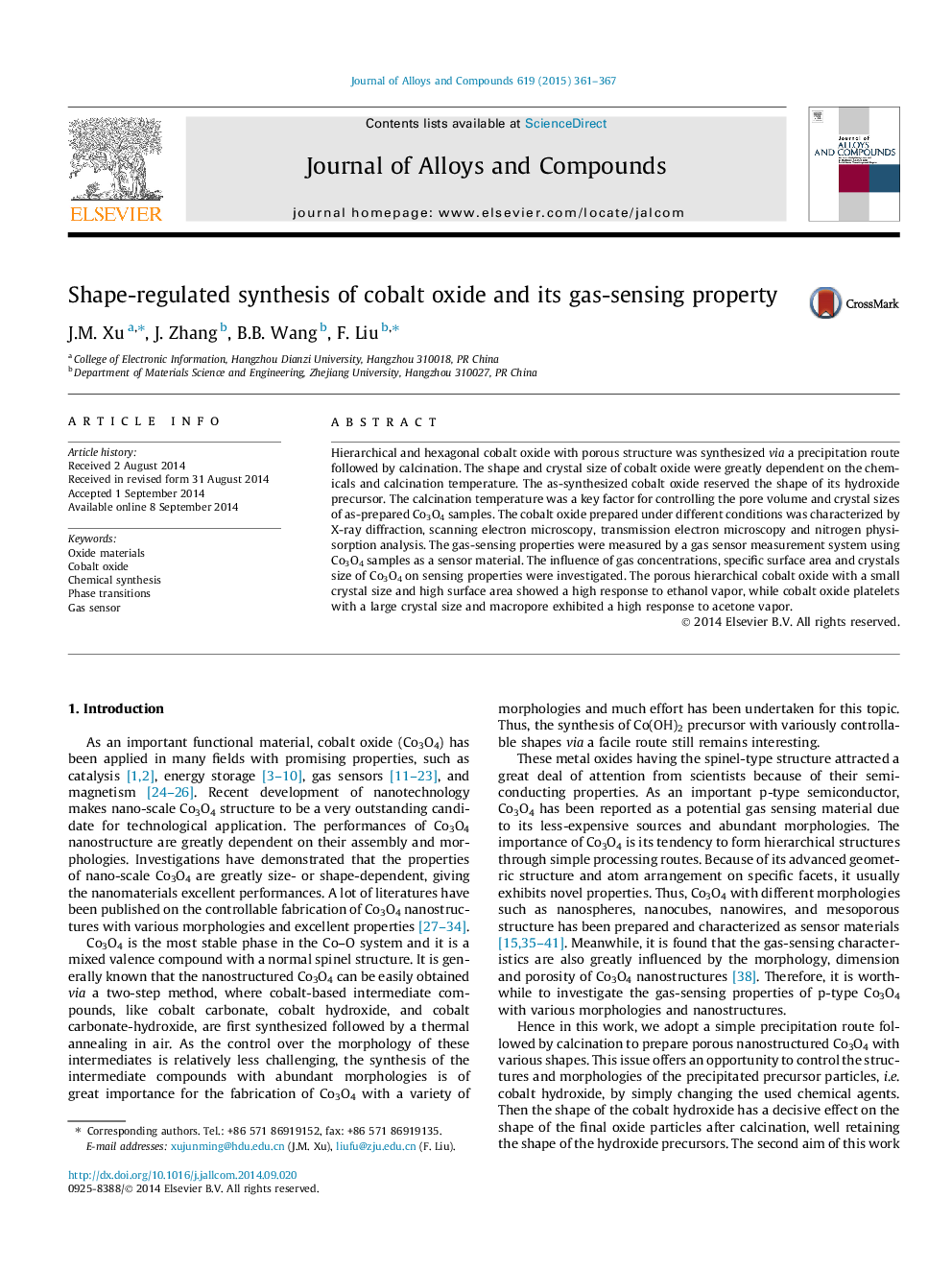| Article ID | Journal | Published Year | Pages | File Type |
|---|---|---|---|---|
| 8000563 | Journal of Alloys and Compounds | 2015 | 7 Pages |
Abstract
Hierarchical and hexagonal cobalt oxide with porous structure was synthesized via a precipitation route followed by calcination. The shape and crystal size of cobalt oxide were greatly dependent on the chemicals and calcination temperature. The as-synthesized cobalt oxide reserved the shape of its hydroxide precursor. The calcination temperature was a key factor for controlling the pore volume and crystal sizes of as-prepared Co3O4 samples. The cobalt oxide prepared under different conditions was characterized by X-ray diffraction, scanning electron microscopy, transmission electron microscopy and nitrogen physisorption analysis. The gas-sensing properties were measured by a gas sensor measurement system using Co3O4 samples as a sensor material. The influence of gas concentrations, specific surface area and crystals size of Co3O4 on sensing properties were investigated. The porous hierarchical cobalt oxide with a small crystal size and high surface area showed a high response to ethanol vapor, while cobalt oxide platelets with a large crystal size and macropore exhibited a high response to acetone vapor.
Related Topics
Physical Sciences and Engineering
Materials Science
Metals and Alloys
Authors
J.M. Xu, J. Zhang, B.B. Wang, F. Liu,
